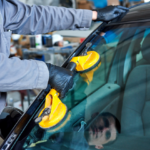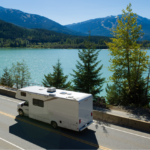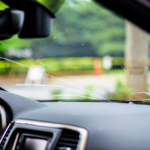If you’re in the market for a new car, there are a lot of factors to consider: fuel efficiency, style, comfort, and, of course, price. But one thing often overlooked is how much the car will cost to insure. Insurance rates can vary widely depending on the car’s make and model and the driver’s age, driving record, and location.
That’s why it’s necessary to research and evaluate which cars are best for low insurance rates.
By considering factors such as safety features, size and weight, repair costs, theft rates, and your own driving habits, you can make a smart choice that fits not only your needs but also your budget.
Let’s look at what affects car insurance costs most.
Safety: Advanced safety features — like forward-collision and lane departure warning systems, automatic emergency braking, and adaptive cruise control can help avoid accidents or at least reduce the severity of one. This results in fewer claims, lower insurance payouts for the insurer, and sometimes lower rates on your policy.
Size and weight: Car size and weight can impact the cost of insurance. Larger and heavier cars are generally considered safer, providing better protection to passengers in an accident, and may be less expensive to insure than smaller, lighter cars. Additionally, larger cars often come equipped with more advanced safety features, built-in as standard, which can further reduce insurance costs.
Repair costs: Did you know that insurance companies factor in the cost of repairs when setting premiums? The availability and cost of replacement parts and the complexity of the car’s technology are two factors that can affect repair costs. Cars with widely available parts tend to be less expensive to repair than those with unique or rare parts — and, therefore, less costly to insure. Those with advanced technology or complicated mechanical systems may require specialized repair services, which can increase repair costs.
Theft rates: You’ll see higher premiums for cars more likely to be stolen. Vehicles with lower theft rates are typically less expensive to insure. And you’ll find that specific makes and models may be more popular among thieves or easier to steal due to a lack of security features. Additionally, cars parked in high-crime areas will cost more to insure.
Vehicle age: Cars right off the showroom floor tend to have higher insurance costs due to their higher value and potential for costly repairs or replacement in case of theft or accidents. However, newer cars often have built-in safety features that lower the risk of injury or damage and reduce the overall insurance cost. On the other hand, older cars may cost less but lack safety features found in newer models, resulting in higher insurance premiums.
Driving habits: Safe driving habits, a clean driving record, and lower annual mileage can help keep insurance costs down. Drivers with a history of accidents, traffic violations, and claims against their policies — not just auto insurance — may face higher premiums. On the flip side, car owners who drive less or have a shorter commute may be eligible for lower rates as they’re less likely to be involved in accidents. Some insurance companies offer usage-based policies that assess risk and set premiums based on driving habits like speed, acceleration, and braking.
Driver profile: Insurance rates can vary based on all of the above as well as location, age, gender, and credit score, so it’s important to shop around for insurance and compare rates from multiple insurers.
What about vehicle type?
The type of vehicle you have influences insurance costs as well. Here’s a breakdown of how some common types of cars are generally affected:
SUVs and minivans: Insurance rates for SUVs and minivans tend to be lower than for smaller cars because they are typically larger and heavier, making them safer in accidents. They also tend to have a lower risk of injury to occupants in accidents.
Compact cars: Compact cars are generally less expensive to insure than larger cars because they cost less to fix or replace after an accident. On the other hand, they can sometimes have higher rates than larger cars due to suffering more damage in an accident and lower safety ratings.
Convertibles and sports cars: Insurance rates for convertibles and sports cars tend to be higher due to their power-performance capabilities and the fact that they are often associated with risk-taking behavior. They’re also more likely to be stolen.
Electric vehicles: Insuring an electric car generally costs around 25% more than its gas-guzzling counterpart due to the higher sticker price. But they have a lower risk of accidents which can help alleviate the insurance cost. Additionally, some insurers offer discounts for eco-friendly vehicles.
Pick-up trucks: Insurance rates for pick-up trucks can be lower than for cars due to their lower risk of theft, but rates can vary depending on the specific make and model. Additionally, the cost of replacement parts can sometimes be higher, affecting rates.
Luxury cars: Similarly, luxury brands are often more expensive to insure than other cars because they are more pricey to repair or replace. Plus, luxury cars are bigger targets for car thieves.
Self-driving vehicles: Insurers are still figuring out how to price policies for self-driving cars. If they’re thought to be safer, insurance rates will be lower than traditional cars. But repairing or replacing autonomous technology after an accident could potentially drive up rates.
Used cars: Because of their lower value — and the cost to replace or repair them after an accident is less — used cars are generally less expensive to insure than new cars. However, rates will still depend on the age and condition of the car — and any previous accidents it may have been involved in.
Classic cars: These are historical or cultural significance cars that are at least 20 years old, and their rarity is factored in when determining rates. Since they’re rarely used and have lower annual mileage, they won’t cost as much to insure. Storing the car in a garage may be required to get damage or theft coverage.
So, which cars are the cheapest to insure?
Based on the factors outlined, some cars will be less expensive to insure than others. Let’s look at ten new vehicles for 2023 that tend to have lower insurance rates. We listed them from higher to lower policy costs.
Hyundai Kona
Among popular electric cars, the 2023 Hyundai Kona is one of the most affordable to insure. $23,475 MSRP
$2,152 avg. annual insurance
Kia Forte
For a new car with advanced safety features and infotainment technology, the Forte has a low starting price, which makes insuring it more affordable. $19,490 MSRP
$1,326 avg. annual insurance
Honda Civic
This compact car is known for being safe and reliable, which can help lower insurance rates. It also has a low theft rate. $23,450 MSRP
$1,311 avg. annual insurance
Hyundai Elantra
The Elantra is an affordable compact car with good safety ratings and a low theft rate, making it a cost-effective option for insurance. $20,500 MSRP
$1,282 avg. annual insurance
Toyota Camry
A little roomier than the Civic, the Camry is a midsize car that’s considered to be extremely safe — and it’s got a low theft rate. $27,315 MSRP
$1,267 avg. annual insurance
Nissan Rogue
The Rogue is a larger SUV that’s also got good safety ratings and isn’t a target for car theft. Helping to keep insurance costs down is its popular blind spot monitoring feature. $27,760 MSRP
$1,190 avg. annual insurance
Toyota RAV4
Like the CR-V, the SUV is popular because of its low theft and high safety ratings. The RAV4’s automatic emergency braking and adaptive cruise control help to keep policies less expensive. $27,575 MSRP
$1,181 avg. annual insurance
Ford Escape
This compact SUV offers good value for its price, with a spacious interior, fuel efficiency, and advanced safety features, like automatic emergency braking and adaptive cruise control. Plus, it’s not a high target for theft, which helped it make our list of easy-to-insure vehicles lower insurance costs. $27,500 MSRP
$1,157 avg. annual insurance
Subaru Outback
This crossover SUV is a larger, heavier vehicle with good safety ratings and standard all-wheel drive. These make it safer in bad weather and can lower insurance costs. $28,395 MSRP
$1,121 avg. annual insurance
Honda CR-V
The CR-V is another SUV with good safety ratings. Automatic emergency braking, lane departure warnings, and the fact that it doesn’t get stolen a lot help keep insurance costs down. $29,705 MSRP
$1,099 avg. annual insurance
Let’s drive!
Keep in mind that insurance rates can vary widely based on several factors, including your driving record, age, location, and credit score. Your rates could be higher or lower depending on the chosen insurance company.
Guided Solutions can compare quotes from multiple insurers to find the best rates for your specific situation. Let us shop for car insurance for you!









